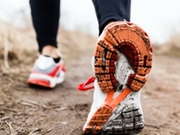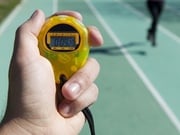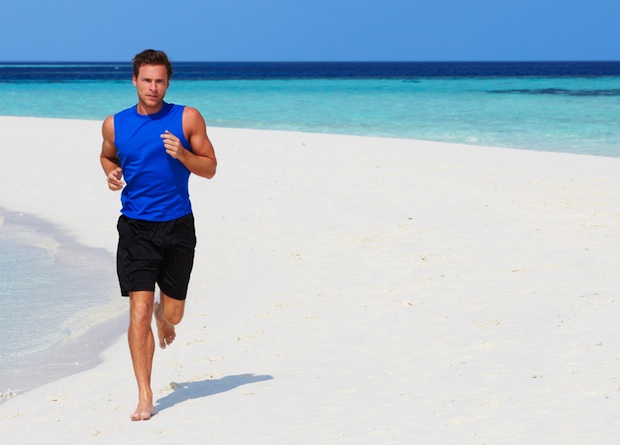With gentle waves, cool ocean breezes, and straight views to the horizon, the Memorial Day weekend ahead offers a change of running scenery from the monument route to a new terrain that will test your muscles: sand.
But while running on the beach offers welcome views and shin relief from pavement pounding, it’s not without some aches and pains of its own. Here are some answers to commonly asked questions about running on the beach.
I ran on the beach and woke up the next morning sore as ever. What’s the deal?
When you run on a new surface, your body is likely to retaliate. Because the surface of the sand offers varying levels of firmness, each stride will displace your weight randomly and keep those calf and foot muscles guessing. So unless you’ve been running on sand since the days of Baywatch, decrease the intensity of post-run soreness with a solid amount of dynamic stretching both before and after your run.
Should I forgo the sneakers on a beach run?
Local running coach Mike Hamberger says he chooses to go barefoot on the beach for the occasional run. He does not go so far as to endorse an exclusively barefoot training regimen due to the lack of research into its link to injury or benefit. However, you can count on burning some extra calories while barefoot, because it “asks different muscles in your feet and calves to do a lot more work, so you burn more calories,” Hamberger says.
That said, it’s fine to keep the sneakers on—if you’re okay coming home with some major sock tan-lines and sandy shoes.
How long should my beach run be?
Because of the extra work required from your leg muscles, Hamberger cautions runners not to go too far, since it will take more time to cover an equal amount of distance on pavement and grass. “The run should be more about time than miles,” Hamberger says. “I would not suggest doing your longest run of the week on the beach, either.”
His advice to anyone before heading out a run on the beach, barefoot or not, is to know your individual ability. There’s no need to push your limits with 800 repeats—this is, after all, a vacation.
“If you run too far [on the beach], you could be pretty sore for the next week,” Hamberger says. “Especially if you have a race the following week, I would take it easy.”
On what part of the beach should I run?
As you head down to the shoreline, find what Hamberger calls “that happy medium” strip down the beach where the sand is firm with a little give. It will be that part just beyond where the surf ends but not too low by the water, and below the dry, scorching sand higher on the beach.
Once you master the barefoot beach run, Hamberger suggests taking your workout to the next level with an additional 20-minute swim in the ocean.
You Might Also Like:

How to Fix 4 Common Running Mistakes |

How to Run an 8-Minute Mile |

A Beginner’s Guide to Trail Running |



















